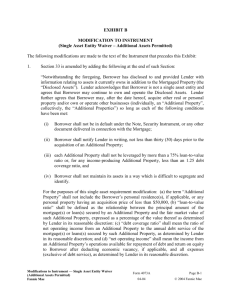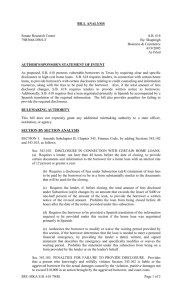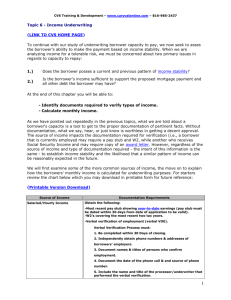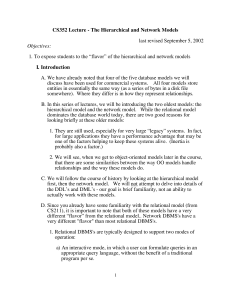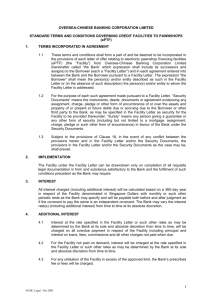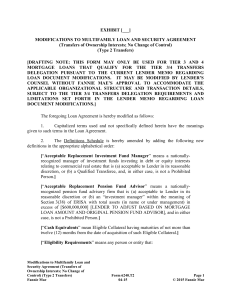Calculating Monthly Gross Income and Other Earned
advertisement
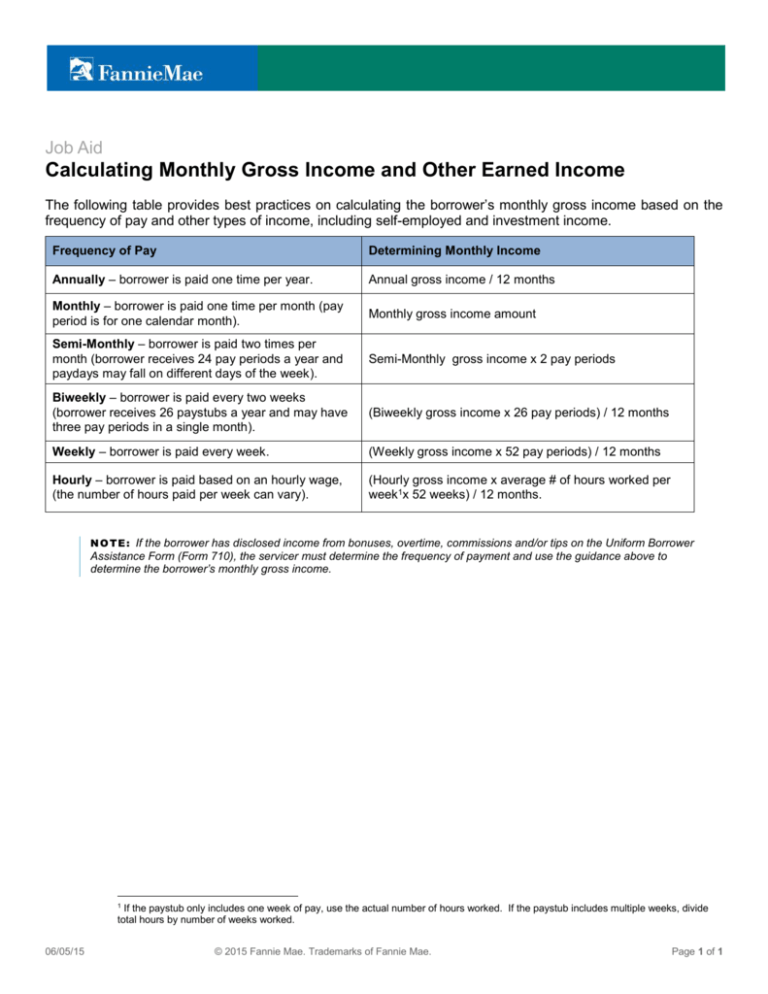
Job Aid Calculating Monthly Gross Income and Other Earned Income The following table provides best practices on calculating the borrower’s monthly gross income based on the frequency of pay and other types of income, including self-employed and investment income. Frequency of Pay Determining Monthly Income Annually – borrower is paid one time per year. Annual gross income / 12 months Monthly – borrower is paid one time per month (pay period is for one calendar month). Monthly gross income amount Semi-Monthly – borrower is paid two times per month (borrower receives 24 pay periods a year and paydays may fall on different days of the week). Semi-Monthly gross income x 2 pay periods Biweekly – borrower is paid every two weeks (borrower receives 26 paystubs a year and may have three pay periods in a single month). (Biweekly gross income x 26 pay periods) / 12 months Weekly – borrower is paid every week. (Weekly gross income x 52 pay periods) / 12 months Hourly – borrower is paid based on an hourly wage, (the number of hours paid per week can vary). (Hourly gross income x average # of hours worked per week1x 52 weeks) / 12 months. N O T E : If the borrower has disclosed income from bonuses, overtime, commissions and/or tips on the Uniform Borrower Assistance Form (Form 710), the servicer must determine the frequency of payment and use the guidance above to determine the borrower’s monthly gross income. 1 If the paystub only includes one week of pay, use the actual number of hours worked. If the paystub includes multiple weeks, divide total hours by number of weeks worked. 06/05/15 © 2015 Fannie Mae. Trademarks of Fannie Mae. Page 1 of 1



